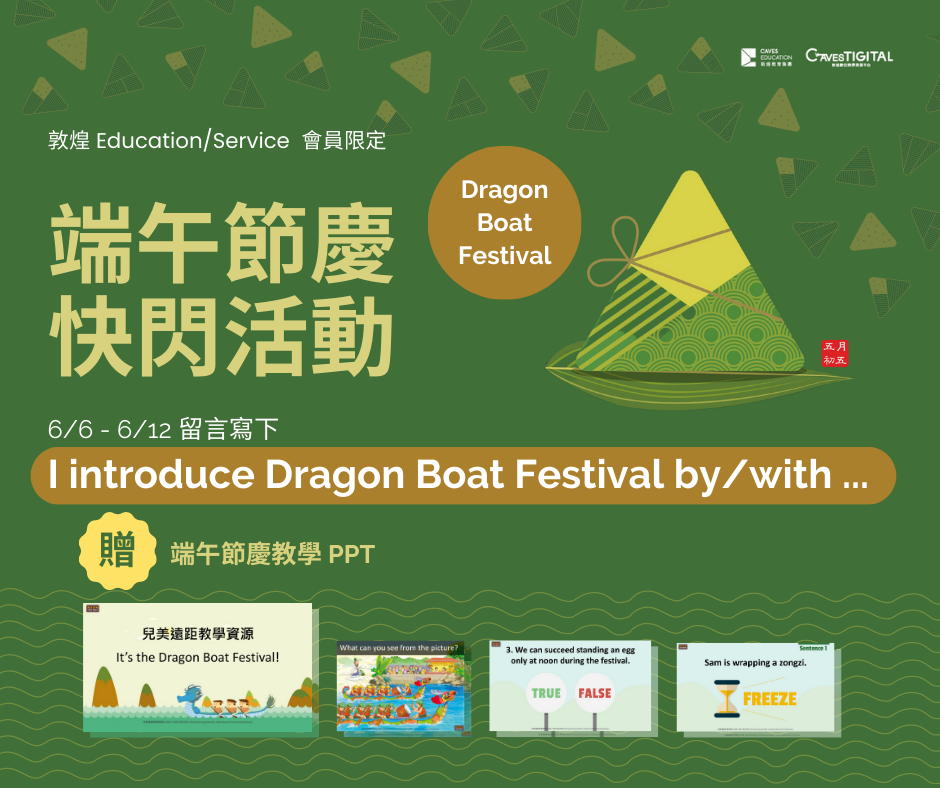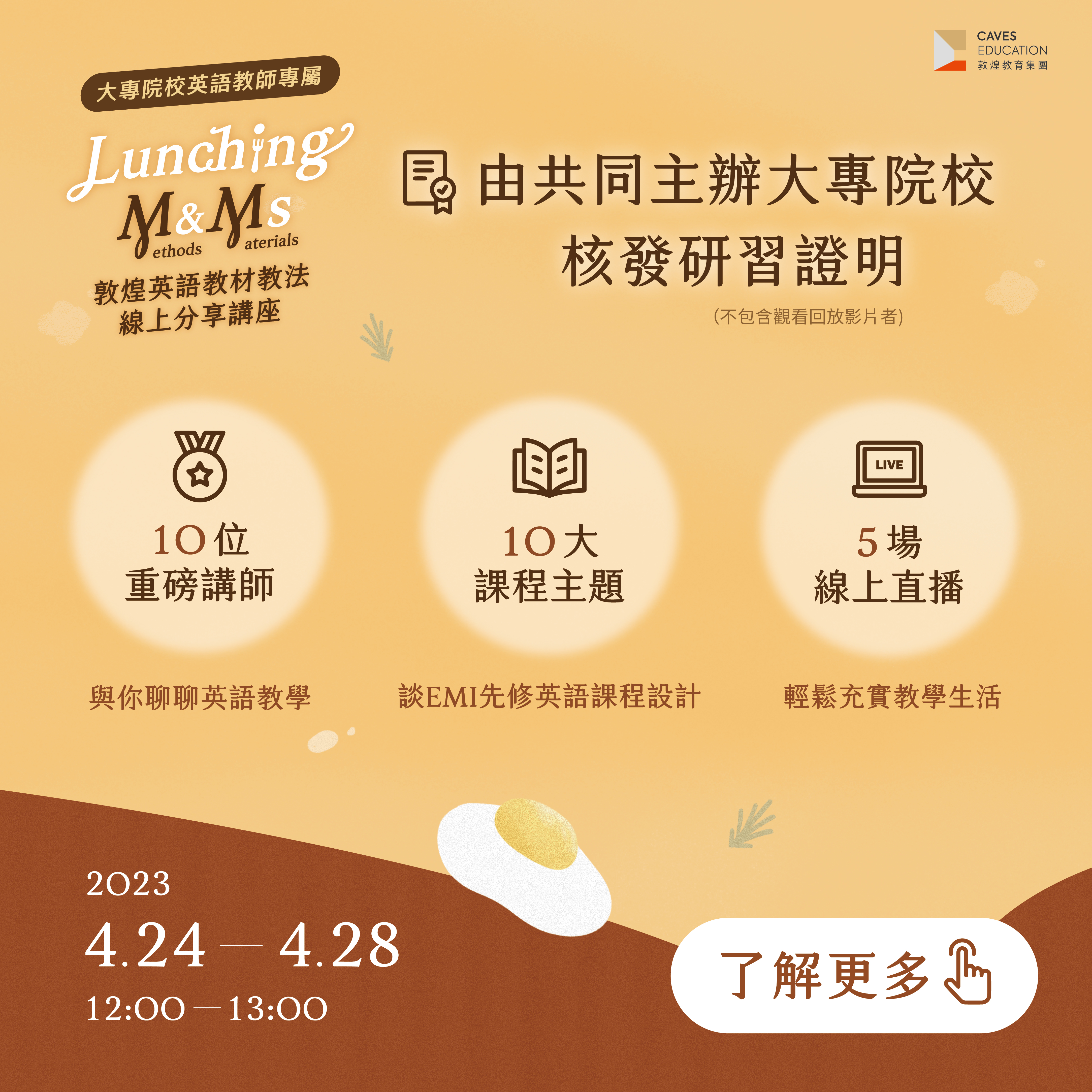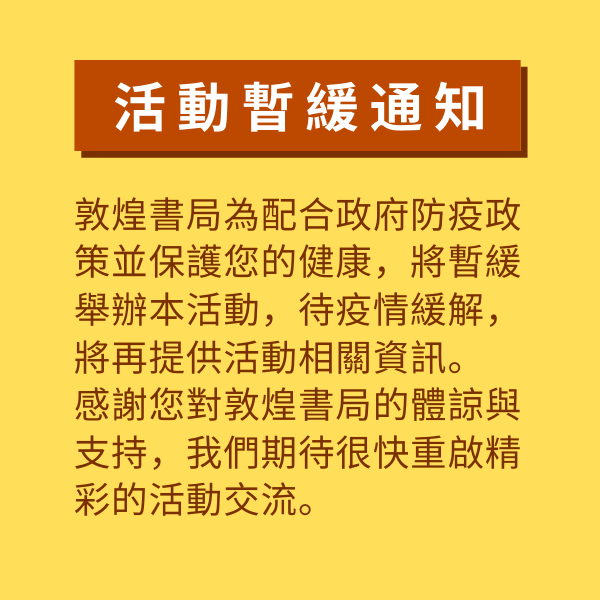閱讀是開啟知識的鑰匙,透過文字魔法帶領著我們穿越不同的領域。身為英文老師的你心裡或許在吶喊著:「這我都知道!」,但現實是「學生就是不愛閱讀啊!!! 他們只喜歡逛 IG、看網紅和刷 YT」。
是的,現代人手裡都握著一個小宇宙,每天都活在這迷人的小框框裡,藍光螢幕裡似乎藏著太多的色彩和新鮮事。
然而,網路裡的文字時常是短且片段式,孩子仍需要句子,段落,甚至到長篇文章的理解能力,以及獨立思考的判斷力。
接下來,要跟老師們分享如何運用 Non-fiction 及 Fiction 兩種差異頗大的文章類型,透過教材內容引導和簡單教案設計,同時刺激學生學習動機並培養獨立思考的關鍵能力。
Non-fiction 類文章
真實人物事件
上篇文章所提及,閱讀是最容易結合 CLIL 及 STEAM 理念的開端,然而硬梆梆的學科內容,身為語言教育者的我們,難免擔心自身背景知識不足而望之卻步。
其實,透過有趣的真實語料,學生往往會因為選材是真實生活環境可以觸及,而產生連結感,進而誘發好奇及學習動力。
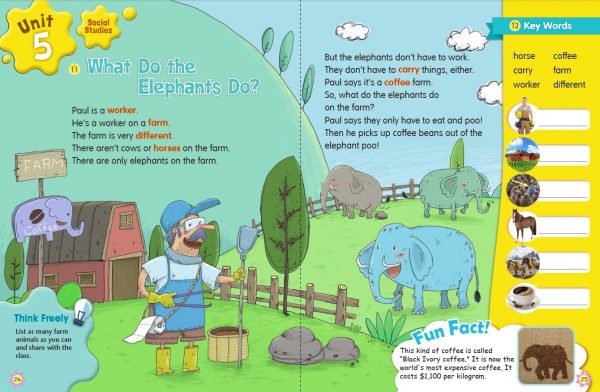 (圖一)
(圖一)
上面這篇 What Do the Elephants Do? 即是透過大象在農村的日常,引發學生好奇心(見圖一)。當他們讀到 “Paul says they only have to eat and poo.” 時,會先產生好奇,進而了解到這是真實發生在泰國的農場,而這農場生產的是目前世界最昂貴的咖啡(見圖二)。
透過內容,可以延伸的是橫跨自然,生態,動保,咖啡產業等多元議題的討論,而這也無形中給了學生許多刺激和思考的機會。
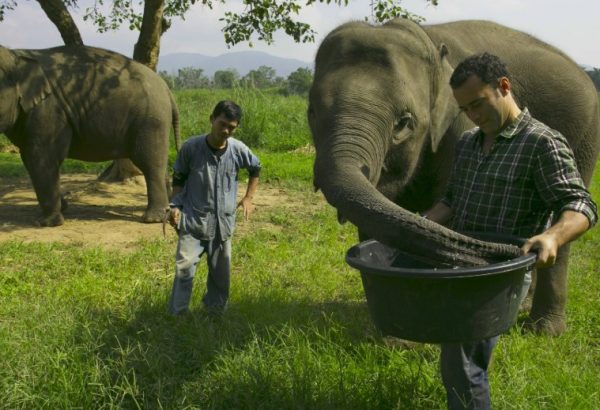 (圖二)
(圖二)
另外,這篇與運動籃球相關的內容(見圖三),同時也點出 can 的用法及句構,透過句子如:”She can run. She can throw.” 和 “She can catch the ball.”,學生不但學會表達「能力」的用法,若再搭配簡單有趣的 project(見圖四),依照球場位置,搭配每個動物所站位置的意義,試著替動物選手選擇合適的位置,讓學生立即就能運用此課程裡所學到的語料,如: “I chose kangaroo because it can jump very high!” 來說明為何做出這樣的選擇。最後再輔以真實 WNBA 選手 Sue Bird 的故事(見圖五),整個課程產生溫度,閱讀的內容不再有距離,而是真真切切地發生在你我的日常裡。
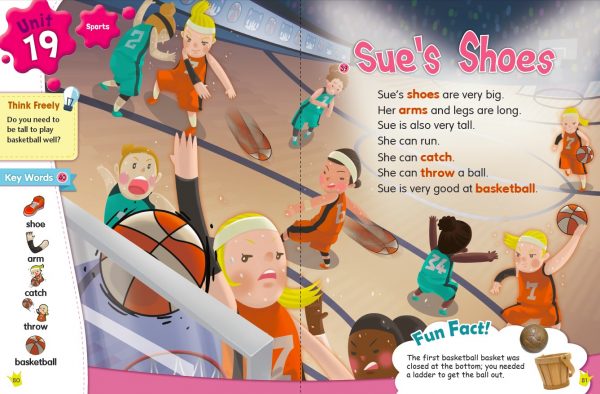 (圖三)
(圖三)
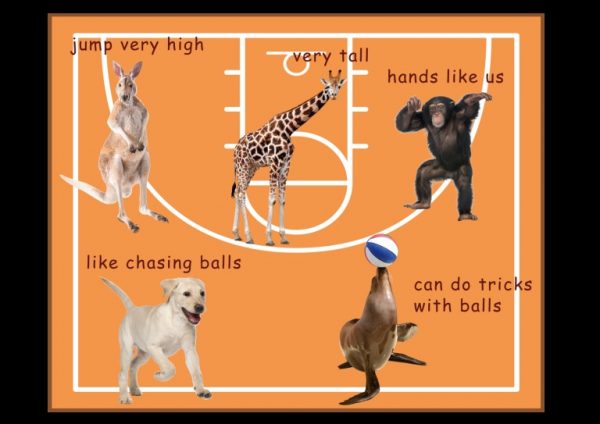 (圖四)
(圖四)
 (圖五)
(圖五)
教案範例
分享以 What Do the Elephants Do? 在課堂裡可操作的教案範例。
Unit | What Do Elephants Do? | Students | 3rd Grader |
Time | 50 mins per class | Classes | Two Classes |
Materials | Student Book, R21 APP or flashcards, Interactive whiteboard or projector | ||
Reference | Teacher Manual, online video, pictures of Black Ivory farm and coffee | ||
Objectives | Vocabulary: worker, farm, different, horse, carry, coffee Pattern: There is/ There are/ have (has) to Subject Matter: Social Study/ Animals Protection/ Environment At the end of the class, students should be able to...
21st Century Skills: Communication, Collaboration, Critical Thinking | ||
Teaching Procedures | |||
Warm Up (Before Reading): 5-10 mins
While Reading: 20 mins
After Reading: 15-20 mins
| |||
Fiction 類文章
故事發展的小曲折
故事性的文本一直是教學現場的主流,不管是經典文學或是原創故事,只要內容生動有趣,都容易激發學生想知道「結局」而繼續閱讀的動力。
可惜的是,大部分的經典文學文本,並非皆適合學生的年齡或程度,即便經過改寫,也常缺乏學生「主動參與」或「獨立思考」練習。
因此,在挑選閱讀內容時應兼顧學生程度以及提供學生參與的機會,參考範例如下:
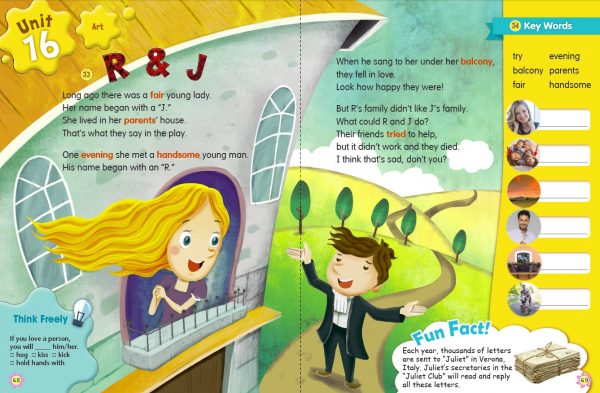 (圖六)
(圖六)
《羅密歐與茱麗葉》是大多數人都知道的經典故事,而如何改寫成合適國小二年級學生的內容,這篇就做了很好的示範(見圖六)。
文章內不直接點出 Romeo & Juliet,而以 R & J 當作代號,這樣的設定,馬上就誘發出孩子的好奇心,文內寫道 “But R’s Family didn’t like J’s family. What could they do?” 這就是開啟了學生 involve 的關鍵,孩子不再是旁觀者,每個人都有機會變成 R & J 獻策的智多星。
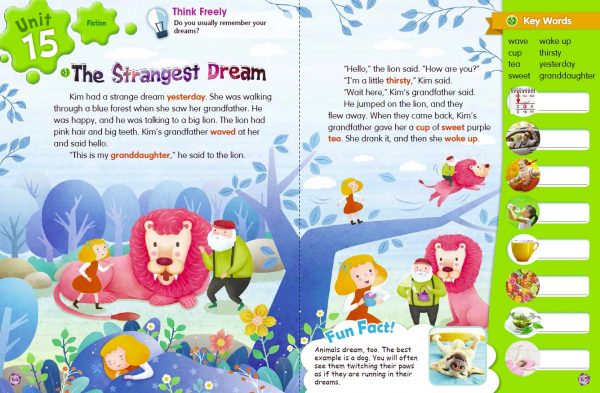 (圖七))
(圖七))
當然原創題材比起經典增加了更多可能性,也更能注入新穎的元素。The Strangest Dream 以「夢境」延伸想像空間,這樣的主題,非常適合讓學生有創意發想的機會(見圖七)。
若再仔細看一下文本,會發現 “She was walking through a blue forest when she saw her grandfather. …he was talking to a lion.” 談論過去或夢境間發生的行為,大量的過去進行式句構被運用於文章中,課後討論就能運用過去進行式用法的句子,如:”What was your strangest dream?” 來進行口語溝通。
當然老師們也可以進行與「夢境」相關的故事,延伸更多學生自身經驗的討論。
教案範例
原創故事,一般都會直接與文學結合。但如何融合其他學科,並同時兼顧語言學習,以 The Strangest Dream 在課堂裡可操作的教案範例。
Unit | The Strangest Dream | Students | 4th Grader |
Time | 50 mins per class | Classes | Two Classes |
Materials | Student Book, R21 APP, Interactive whiteboard or projector, Dream Catcher | ||
Reference | Teacher Manual, online video, classic tale related to dreams | ||
Objectives | Vocabulary: yesterday, wave, granddaughter, thirsty, cup, wake up Pattern: past continuous and simple past, regular and irregular past verbs Subject Matter: Fiction: literature / Animals / Culture At the end of the class, students should be able to…
21st Century Skills: Communication, Collaboration, Critical Thinking, and Creativity | ||
Teaching Procedures | |||
Warm Up (Before Reading): 5-10 mins
While Reading: 20 mins
After Reading: 15-20 mins
| |||
結語
透過以上分享,我們可以看到閱讀課程的更多可能性,當然好的文章可以節省老師構思課程的時間,但也是因為在教育現場的您們,才可以賦予這些素材更多生命力!! 就從今天開始,讓我們一起真正的讓孩子透過閱讀打開未來更多的可能性!
(以上插圖皆出自 R21-Reading for 21st Century Kids 系列)
更多 Chris Yang 老師好文分享:
作者簡介│Chris Yang
- 敦煌書局出版部經理 aka 熱血的語言教材出版人
- 多年教學、教育訓練以及課程規劃經驗
- 中央奧克拉荷馬大學教育碩士



 © All rights reserved, powered by
© All rights reserved, powered by 